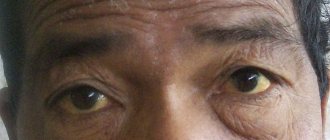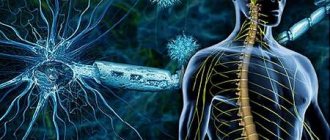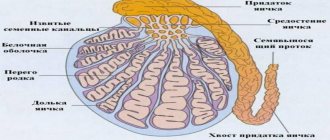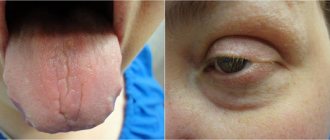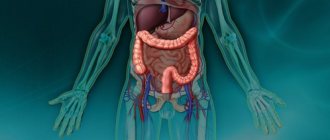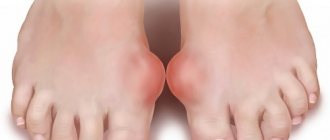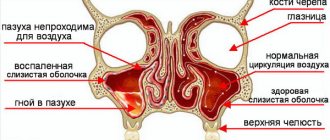In the pursuit of stability, prosperity and professional growth, humanity has forgotten how to enjoy what has been achieved, has lost peace of mind and the ability to restore its own internal reserves. It is not surprising that the number of nervous and mental disorders is steadily growing. The most “popular” among them is depression. According to WHO reports, more than 200 million people worldwide are affected by various types of depression, and about 500 million suffer from latent forms of the disease. Based on statistics, every tenth man experiences such a disorder at least once in his life. Women are more likely to experience the effects of depressive disorders; every fifth representative of the fairer sex suffers from depression.
Depressive disorder is a difficult disease to diagnose, complete recovery from which is only possible with timely consultation with a specialist (psychiatrist, psychotherapist, neuropsychiatrist).
According to medical sources, depression is represented by various types of mental disorders. The classification of various types of depressive disorders is constantly expanding. This is explained by the active development of science in the field of psychiatry due to the increase in the number of people affected by this disease and the expansion of the range of its manifestations.
Concept of chronic depression
What is chronic depression? Chronic depression is a mild mental disorder (dysthymia) that lasts up to 2 years. Females are more susceptible to this disease than males. The symptoms of the pathology are not pronounced, so others may not notice the problems. The client continues to lead his usual lifestyle.
Due to the absence of external manifestations of the disease, relatives do not realize that the client needs help. The consequence of this is the occurrence of more severe conditions and complications. The person thinks about suicide and may attempt suicide.
Differences between postpartum depression and blues
Mental disorders are constantly confused with simple mood disorders. What is the difference between postpartum depression and the blues?
If we look at the issue from a general perspective, the following points are typical for postpartum depression:
- Persistence. No variability over months or even years.
- Duration. The duration of the blues is determined by several days, maximum weeks. However, there cannot be a long-term course. Not counting patients in whom dysthymia is a normal phenomenon, a character trait. However, in this situation there are no other symptoms.
- No variability. Blues, including against the background of vitamin deficiency, climate change, and time zone, develops quickly, but is extremely unstable. Any positive event is often enough to dispel melancholy and remove feelings of hopelessness and depression.
- A clear set of symptoms. Postpartum depression can be determined by analyzing the clinical picture. This is a key way of examining and identifying the problem.
Blues is not a diagnosis, and it is usually not associated with spikes in neurotransmitter levels. Therefore, the pathology does not have an obvious biochemical basis. This is the result of the body’s reaction to stress and adaptation to new conditions.
Causes of depression
Chronic depression, what is it? The causes of the disease are not completely clear. According to most doctors, one of the reasons for the occurrence of chronic depression is a deficiency of the hormone responsible for joyful emotions in the human brain. This hormone is called serotonin. The following triggers can also cause mental illness:
- long-term use of medications;
- pathologies of the central nervous system of a chronic nature and other diseases;
- difficulties in personal life and at work;
- tragic events in the family;
- separation from a loved one;
- long-term use of alcohol and psychotropic drugs.
Regardless of the reasons that became the impetus for depression, loved ones are required to participate in the client’s life. Without their help, the client will not be able to cope with a difficult life situation and solve problems.
Causes of postnatal depression
The reasons for the problem are somewhat different if we consider the disorder in a broad context. Speaking of etiology, the causes of postpartum depression are mainly biochemical. The trigger or trigger mechanism is an unfavorable situation, which one is a question of anamnesis, general social situation, family situation.
Why does the disorder occur?
- Unfavorable emotional atmosphere at home
The birth of a child is a great stress for the mother’s body. The body is in a state of difficult adaptation; complications are possible, which only aggravate the matter. If there is not enough support at home, a favorable psycho-emotional climate, there is no talk of any normal recovery. Often the problem is the lack of assistance during the transition period when a woman gets used to a new role. Also a huge problem is the husband’s inappropriate behavior. Indifference or leaving the family altogether. Such factors can provoke not only postpartum depression, but also psychosis. An acute condition that excludes adequacy. When a mother becomes a danger to herself, her child and others.
- Changes in hormonal levels
The hormonal background is a complex and multifaceted system, subtly connected by all its parts. Therefore, when there is a violation in one area, violations of another kind inevitably develop. Changes in the level of sex-specific substances and pituitary hormones: prolactin, progesterone, estrogen, also affect the concentration, production, and “movement” of neurotransmitters. First of all, serotonin, which is responsible for normal emotional background, suffers. To a lesser extent dopamine. Recovery involves normalizing these components using medication. Without correction, the disorder can continue for years with no apparent prospect of spontaneous resolution.
- Hereditary factor
The deviation may arise as a result of a burdened genetic component. It has been proven that if there was a person in the family with the corresponding diagnosis, the likelihood of developing the same problem in descendants increases significantly. So, if only the father suffered, the risks increase by one and a half times. If the mother - 2.5 times. Presumably, the disease is largely transmitted through the maternal line. Although this fact has not yet been proven. With proper mental “hygiene” and maintaining the right course in life, there is every chance of not encountering a disorder.
- History of depression
It is a proven fact that postpartum changes of the kind in question are more common in those who already have a corresponding diagnosis. Delivery is just another, but extremely severe trigger. Serious stress gives rise to prolonged postpartum depression. Recovery from such a crisis will require more than one month.
- Social, economic difficulties
In this case, there is precisely a violation on the part of the everyday everyday existence of the average person. Lack of enough money, uncertainty about the ability to feed the child and yourself tomorrow, instability of the financial situation, all these seemingly banal and well-understood factors provoke dysthymia and depression. The same goes for problems with your husband. The partner does not always leave the family or show indifference. Aggression and misunderstanding are possible. The family, especially in the case of the first child, begins to rebuild in a new way. This is not easy for both spouses.
- Fear
This reason is most typical for perfectionists, mothers who want to do everything at the highest level. In the head of such a woman there is an image of an ideal mother, which is simply unattainable in principle. Therefore, dissonance arises: the mother does not correspond to her own beautiful, almost fairy-tale image. Hence, postpartum depression, problems with accepting the child and oneself, aggressive, contrasting obsessions (obsessive thoughts) with the desire to harm oneself and the baby are possible.
- History of other mental illnesses, personality characteristics
Some clients of psychologists, for example, individuals of the schizoid, epileptoid type, adapt less well to new environmental factors. In particular, they cannot quickly rebuild their lives in a new way. Hence the problems with accepting the current situation and the development of the corresponding pathological process. However, this is a temporary situation. The situation is much more complicated if there is a history of psychopathy (personality disorders). For example, schizoid, when a person strives with all his might to withdraw from society and interaction with others. Or narcissistic, in the “malignant” form, when a woman is, in principle, incapable of affection due to disorders inherent in early childhood.
- Explicit or hidden dysmorphophobia
An unexpected factor. Dissatisfaction with your own figure provokes mental problems. After childbirth, stretch marks appear. Often, as a result of endocrine changes, hormonal levels are disrupted. Excess weight occurs, problems with skin, teeth, and hair fragility. All these factors, especially if there is dissatisfaction with one’s own body, give rise to an unusual, although quite predictable, outcome.
- Severe pregnancy, premature birth
These are tests for the body. After premature birth, as specialized studies show, the disorder occurs almost 15% more often, which is associated with a sharp jump in hormone levels and a lack of naturalness and completeness of the process. Difficult childbirth with complications, toxicosis, and other problems give approximately the same effect.
- Other problems
For example, with certain constitutional characteristics, a lack of sexual life may be reflected in this way. Although the woman herself may not admit to herself such a change and natural need. Psychological problems can manifest themselves in the same way: childhood violence, childhood psychological trauma.
Identifying the causes plays a huge role. Because pharmacology alone cannot help the matter. Psychotherapy is needed. For it to be effective enough, you need to find the “root of evil,” the source of the negative state.
Symptoms of the disease
Chronic depression in a loved one can be determined by the following signs:
- Manifestation of apathy towards what is happening, loss of interest in life.
- Life seems dull and boring to the client; he perceives reality with hopelessness and despair.
- Throughout the day, the client feels tired and overwhelmed.
- The client's physical activity decreases, actions are performed without enthusiasm, phlegmatically. He doesn't want to do anything. Most of the time is spent in bed. Even watching TV or listening to music does not arouse interest.
- Sleep disturbance. Clients cannot fall asleep for a long time and toss and turn in bed. Some people fall asleep quickly, but their sleep is restless and often interrupted.
- Performance decreases, the client finds it difficult to concentrate on anything, and mental activity decreases.
- Indifference to what is happening. Neither joyful nor sad events are capable of arousing the client's interest.
- Loss of self-esteem, lack of self-confidence.
- Food needs change: the client either refuses food or eats everything indiscriminately.
- Suicidal tendencies.
If several of the symptoms of chronic depression are observed in the behavior of a loved one over the course of 1-2 weeks, it is recommended to consult a doctor. He will help you correctly identify the symptoms of chronic depression and prescribe treatment.
Types and forms of the disease
The classification is carried out according to the nature of the pathological process and the prevailing clinical picture. This is an integral criterion that combines several types of disorder.
Major postpartum depression
The most common type of deviation. Occurs in the majority of sufferers. It accounts for up to 75% of all clinical cases. Recovery is carried out at home or in a hospital. The question is the severity of the pathology and the woman’s subjective desire. The clinical picture is typical: it is a complete triad and additional symptoms (according to diagnostic criteria, there must be at least two additional manifestations). The question of choosing therapy tactics also falls on the shoulders of a psychotherapy specialist.
How long does postpartum depression of this form last? Indefinitely, possibly protracted chronic course. For years.
Small form
It is a truncated version of the previously mentioned process. Unlike the large one, the small one gives only the main triad, perhaps not completely. In almost all cases, dysthymia is present. Persistent decrease in emotional background, also apathy. Decreased speed of thinking, suicidal thoughts and other symptoms are optional and not required for diagnosis.
Alarming
Postpartum anxiety depression produces atypical symptoms. In addition to depression, there is constant fear. For yourself, for the worsening of your own condition, for your child, and so on. In addition, there is constant anxiety of an incomprehensible nature. The sufferers themselves cannot explain what is happening to them, describing the situation as excruciating anxiety; restlessness, nervousness develops, and normal sleep is disturbed. Insomnia and daytime sleepiness occur. Panic attacks occur. Treatment is medication combined with psychotherapy.
Atypical
Rarely found. Accompanied by fragmentation or rapid variability of the symptomatic complex (polymorphism). A necessary condition for recovery is drug correction.
Psychotic
An even rarer case. It is considered a particular variant of postpartum psychosis. Gives productive manifestations. Hallucinations, delusional thoughts and statements, other moments. Eliminated strictly in a hospital setting.
How to get rid of chronic depression?
How to treat chronic depression? Several methods of treating the disease are used:
- Psychotherapy sessions individually or in a group. This therapy is suitable for minor mental disorders. A highly qualified professional in the field of psychology is Nikita Valerievich Baturin. It will help get rid of fears, panic attacks and will be able to increase the client’s self-esteem.
- If psychotherapeutic sessions do not help overcome chronic depression, the doctor will prescribe medication. Together with the sessions it will give a positive effect. Medications are prescribed for disorders of moderate severity.
- If the disease cannot be overcome with the help of sessions and medications, then electroconvulsive therapy is used. It is used for severe depression.
- For severe depressive disorders, magnetic brain stimulation can also be used. It involves applying a strong magnetic field to certain areas of the brain.
- If all of the above methods do not bring positive results, then to get rid of chronic depression, the client’s vagus nerve is exposed to electrical impulses.
How to get rid of chronic depression? To get rid of the disease as quickly as possible, doctors recommend the following:
- The client's daily diet should include foods that promote the production of serotonin.
- Sports training will help you take your mind off sad thoughts and improve your mood. If you can achieve changes in appearance through physical activity, the client’s self-esteem will increase.
- Daily walks in the fresh air, regardless of weather conditions. Walking through a park, square, or being in nature will relieve the client of bad thoughts. It is recommended to have a pet. It will help normalize the client’s daily routine and will occupy all his free time.
- You should go to the cinema, theater, exhibition. Such events will distract you from sad thoughts and allow you to make new acquaintances, which will help diversify your boring life.
Classification of depression by severity
Severe depression provokes in a person thoughts about his own uselessness and uselessness of life
Some sources refer to moderate depression under the term “depressive episode.” According to the International Classification of Diseases, the disorder is coded F32. Depending on the symptoms identified in the patient and the severity of their manifestation, depression is classified into three types according to the severity of the course:
- Mild (ICD-10 – 32.0). 2-3 symptoms are clearly expressed. Such depression can be difficult to distinguish from sadness; the patient is accompanied by internal mental tension, irritability, and blues. In general, mild depressive disorder does not interfere with normal life and work activity, but it does bring some emotional discomfort.
- Moderate or moderate (ICD-10 – 32.1). More than 4 symptoms are observed. Creates certain difficulties for a normal life. A rapid transition to the next stage of the disease is dangerous. Moderate depression will be noticeable to others.
- Severe degree (ICD-10 – 32.2) without psychotic signs. The predominant number of symptoms is clearly expressed. In this state, a person suffers, he is haunted by thoughts of his own uselessness, abandonment, and uselessness. Severe degrees are often accompanied by suicidal thoughts.
But it should be understood that this is not the only classification of depression. Due to the complexity of the disease and the breadth of its symptomatic manifestations, there are several more classification systems according to ICD-10:
- By type: simple and complex.
- According to the course options: bipolar disorder, single depressive episode, recurrent depression, dysthymia, cyclothymia.
- By category “depressive episode”: major depressive disorder, autonomic or unipolar depression.
There are also specific depressions – postpartum, menopause, men’s, etc.
Medicines for depression
Treatment of chronic depression is best done under medical supervision. Doctors prescribe medications with the least side effects. You shouldn't expect a quick effect. The drugs begin to act a few weeks after starting their use. The duration of the therapeutic course is usually at least 6 months. Clients are prescribed the following antidepressants:
- Effexor and Cymbalta are selective family inhibitors with a principle of action based on the reuptake of serotonin and narodrenaline;
- Marplan, Nardil, Parnate, Emsam - monoamine oxidase inhibitors;
- other dosage forms - Mirtazapine, Bupropion.
Due to the fact that all medications have side effects on the body, their selection should be done by a doctor. To make a correct diagnosis and prescribe medications, you need to consult a professional.
Manic depression, or bipolar disorder
Manic depression consists of periods of mania or hypomania, when the person feels very happy, and periods of depression that follow them. Manic depression used to be called bipolar disorder.
A diagnosis of bipolar disorder is made when a person experiences episodes of mania that last about a week or less and require hospitalization. A depressive episode may precede or follow mania.
The symptoms of depressive episodes in bipolar disorder are the same as in classic depression:
- feeling of spiritual emptiness and sadness;
- lack of energy;
- fatigue;
- sleep problems;
- difficulty concentrating;
- decreased activity;
- loss of interest in favorite activities;
- thoughts of suicide.
Signs of a manic phase:
- excess energy;
- decreased sleep duration;
- increased excitability;
- rapid speech and disordered thoughts;
- obsession with “great” ideas;
- self-confidence and high self-esteem;
- unusual, risky and self-destructive behavior;
- high spirits, feeling of euphoria.
In especially severe cases, hallucinations and delusions may appear. Hypomania is a milder form of mania. Mixed episodes of mania and depression sometimes occur.
How to get rid of depression on your own?
The client can independently overcome the signs of chronic depression. To do this you need the following:
- the ability to enjoy little things;
- get rid of circumstances that contribute to deterioration of mood;
- belief in a happy life;
- do not think about the negative aspects of life;
- be physically active;
- make your life interesting;
- find a passion;
- provide services to others;
- do not consider bad events that happen in life as inevitable;
- get a job that you will like;
- listen to your own opinion, regardless of the advice of others;
- don’t be discouraged, don’t complain;
- avoid communicating with people who constantly talk about personal problems;
- do not put off until tomorrow what you can do today (do fitness, go to see friends, start reading a book, etc.).
Types of depression depending on the gender and age of the patient
Depression, like some other illnesses, may be more common in certain social groups or age groups. Also, different types of this disease occur in different sexes.
Depression in men
The modern world imposes countless responsibilities on representatives of the stronger sex, poses many tasks, sometimes impossible. Most men who cannot cope with their “responsibilities”, provide an adequate standard of living for their family, purchase real estate, realize their potential, achieve outstanding success at work or on the physical level fall into a depressed state. Depression can provoke diseases of the cardiovascular system, cervical osteochondrosis, insomnia, headaches, digestive disorders and other physiological disorders, which only aggravate the current disappointing situation.
Many men deny the presence of depression, as they consider it a manifestation of emotional weakness, a lack of masculinity, which is constantly questioned by the outside world. Therefore, instead of solving the problem, a man often withdraws into himself, suffers depression or tries to get out of it on his own. This is not always effective enough; often the person’s condition only worsens. Manifestations such as back pain, insomnia, poor appetite, and decreased sexual function are attributed to a general poor condition, fatigue, and not at all to depression, the symptoms of which are often these signs.
Male depression is very difficult to diagnose because a person usually either hides it or denies it, no matter how long it lasts, justifying his abnormal behavior with various logical reasons.
Symptoms of depression in men:
- The person becomes sad, moves away from friends and family, withdraws from social life and usual interests;
- Other men, on the contrary, become more aggressive, irritable, and take on additional responsibilities at work. They become capable of verbally insulting or hitting loved ones. To relax, to get rid of problems, they begin to abuse alcohol, drugs or psychostimulants. They may interfere in dubious or risky activities, behave hooliganly, decide to act recklessly, or gamble;
- A man may begin to blame other people, circumstances, the whole world for his troubles and failures;
- Such manifestations as constant, uncontrollable anger, suspicion, conflict, anxiety, agitation, desire to control everything, unwillingness to admit one’s mistakes, weaknesses, despair, lack of self-confidence and one’s strengths, loss of a sense of humor and acceptance of constructive criticism.
With all this, the man does not see a doctor, he ignores his psychological problems or self-medicates.
A very important step for relatives is to begin therapy for male depression as early as possible, so that all negative feelings and thoughts, despair, and feelings of hopelessness do not have time to develop into suicidal tendencies or the desire to die on their own.
Depression in women
Most often the question is “Depression – symptoms, how to get out, advice from doctors?” asked specifically by representatives of the fairer sex. Depression in women is twice as common as in the stronger sex. Scientists have even identified being female as a risk factor, a condition that increases the chances of developing depression. The reasons for the appearance and development of depression in women are the same as for all people, but they have their own characteristics. Hormonal changes that begin during puberty, pregnancy, and menopause significantly increase a woman’s chances of developing a condition such as depression. Also, significant physiological changes and great psychological stress during these periods contribute to changes in the emotional state and the emergence of mental pathologies.
Women by their nature are more emotional, impressionable, suspicious, vulnerable and much less logical, rational, and consistent than men. They are not equipped to release aggression; they harbor resentment and feelings within themselves, sometimes for many years. This focus on the negative can trigger depressive disorders. Society obliges a woman to comply with certain conditions - to behave “decently”, to be pedantic, conscientious, responsible, self-critical, and demanding of herself. All these psychological stresses, coupled with increased emotionality, sometimes become overwhelming for a woman.
In addition to disorders characteristic of both sexes, women are susceptible to some purely “female” depressive conditions:
- Premenstrual disorder;
- Depression during pregnancy;
- Postpartum depression;
- Disorders during menopause, menopause.
The duration of such depression can be short or quite long, it all depends on the level of hormones and the personal characteristics of the woman. Mild premenstrual disorder systematically affects approximately 7% of all women. The depressive state appears every month and lasts about 14 days. But about 50% of women giving birth are susceptible to postpartum depression; it can be protracted and severe.
